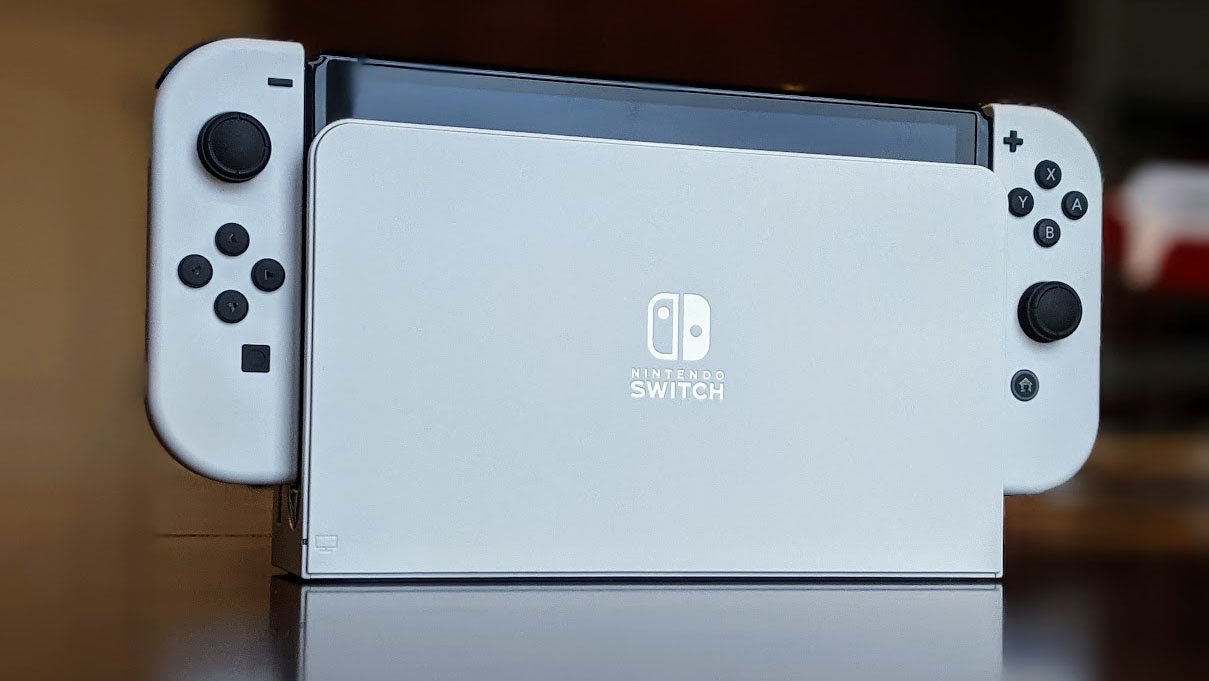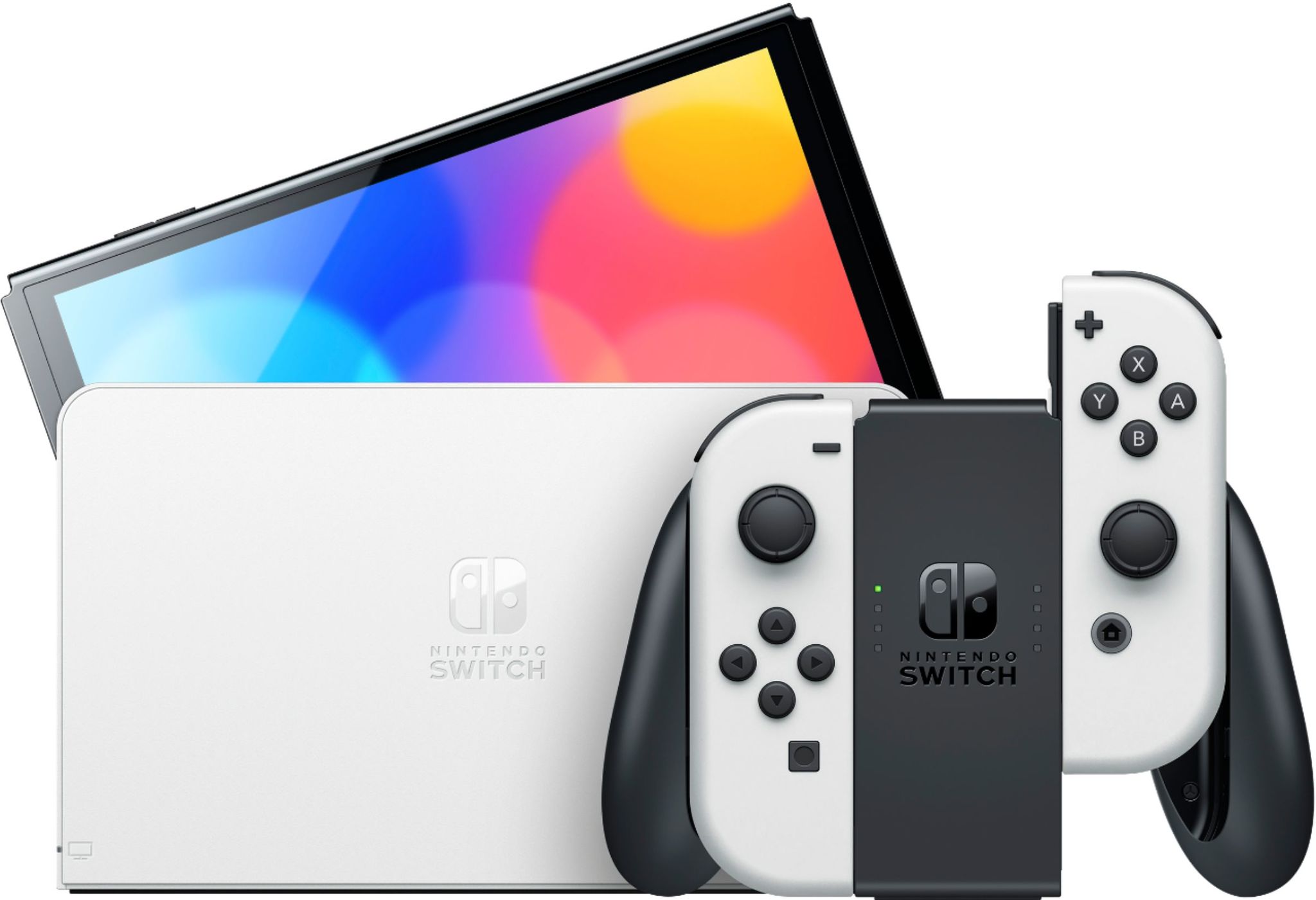iMore Verdict
Bottom line: The Switch OLED features an OLED display, a larger kickstand, double the internal storage of previous Switch consoles, and a LAN port in the dock. Playing in handheld mode is a real treat with those vibrant colors.
Pros
- +
Gorgeous visuals in handheld mode
- +
LAN port in dock
- +
Far sturdier kickstand
- +
Huge library of games
- +
N64 & Sega Genesis games incoming
Cons
- -
Costs more than previous Switch
- -
Doesn't have many improvements over previous Switch consoles
You can always trust iMore.
I've owned every Nintendo Switch iteration that the company has released, starting from the original Switch, to the Switch V2 and Switch Lite, and finally the Nintendo Switch OLED. While this latest version isn't the huge upgrade with 4K and higher processing power that many had hoped for, it's still quite impressive.
The titular OLED screen looks so much bigger and better. Darker hues come through so much more vibrantly and even the outlines and textures on screen are crisper. When comparing the Switch OLED side-by-side with the original Switch or Switch V2, the display looks monumentally better and more modern.
If you haven't purchased a Nintendo Switch yet or you're thinking of upgrading from the Switch Lite or the original Switch, the OLED model with all of its upgrades is definitely an impressive option to consider.
Nintendo Switch OLED: Price and availability
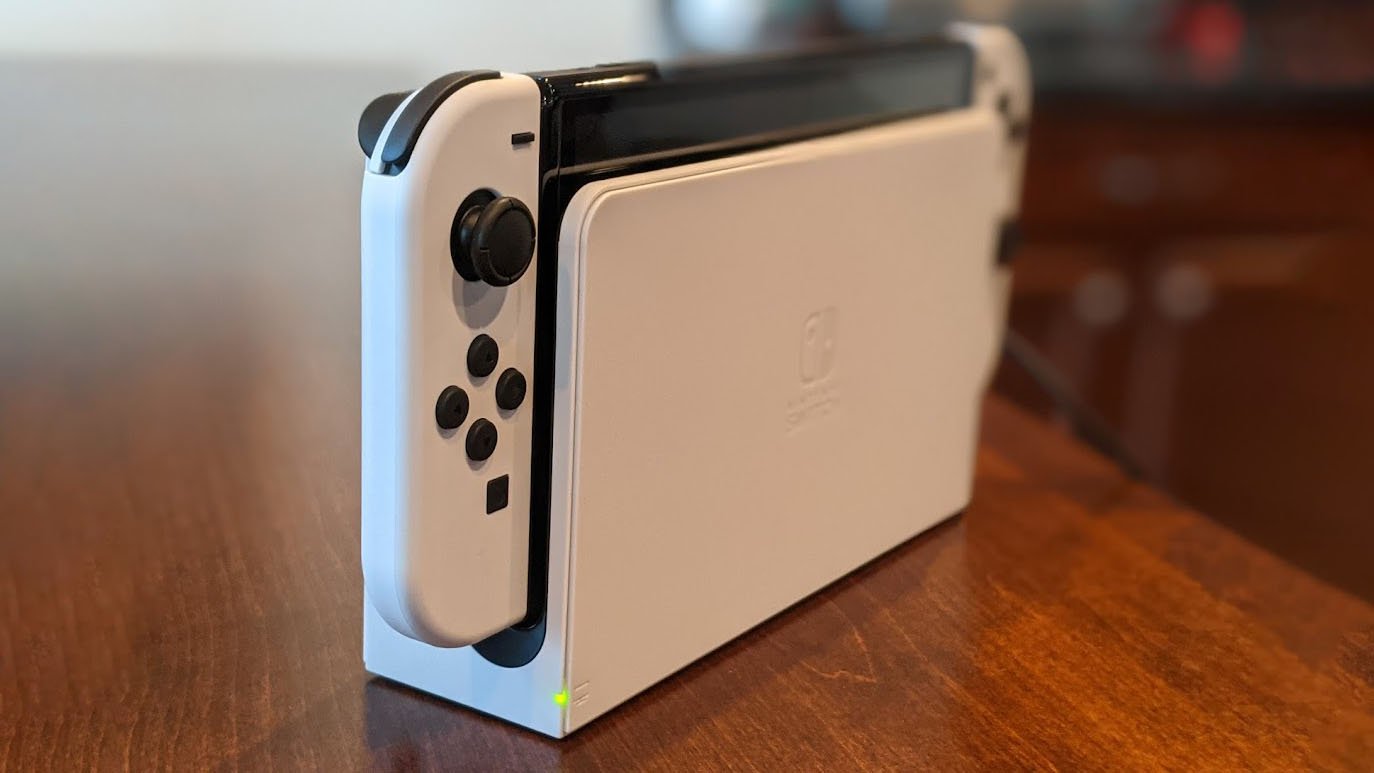
The Nintendo Switch OLED comes with either a white dock with white Joy-Cons or a black dock with neon red and neon blue Joy-Cons. Due to the OLED display and other improvements, it has an MSRP of $350, which is $50 more than the original Switch and $150 more than the Switch Lite. You can find it selling at all major retailers including Amazon, Best Buy, Walmart, and more. It's currently difficult to find it in stock so you'll need to jump on a purchase if you see it's available.
Nintendo Switch OLED: Hardware and design
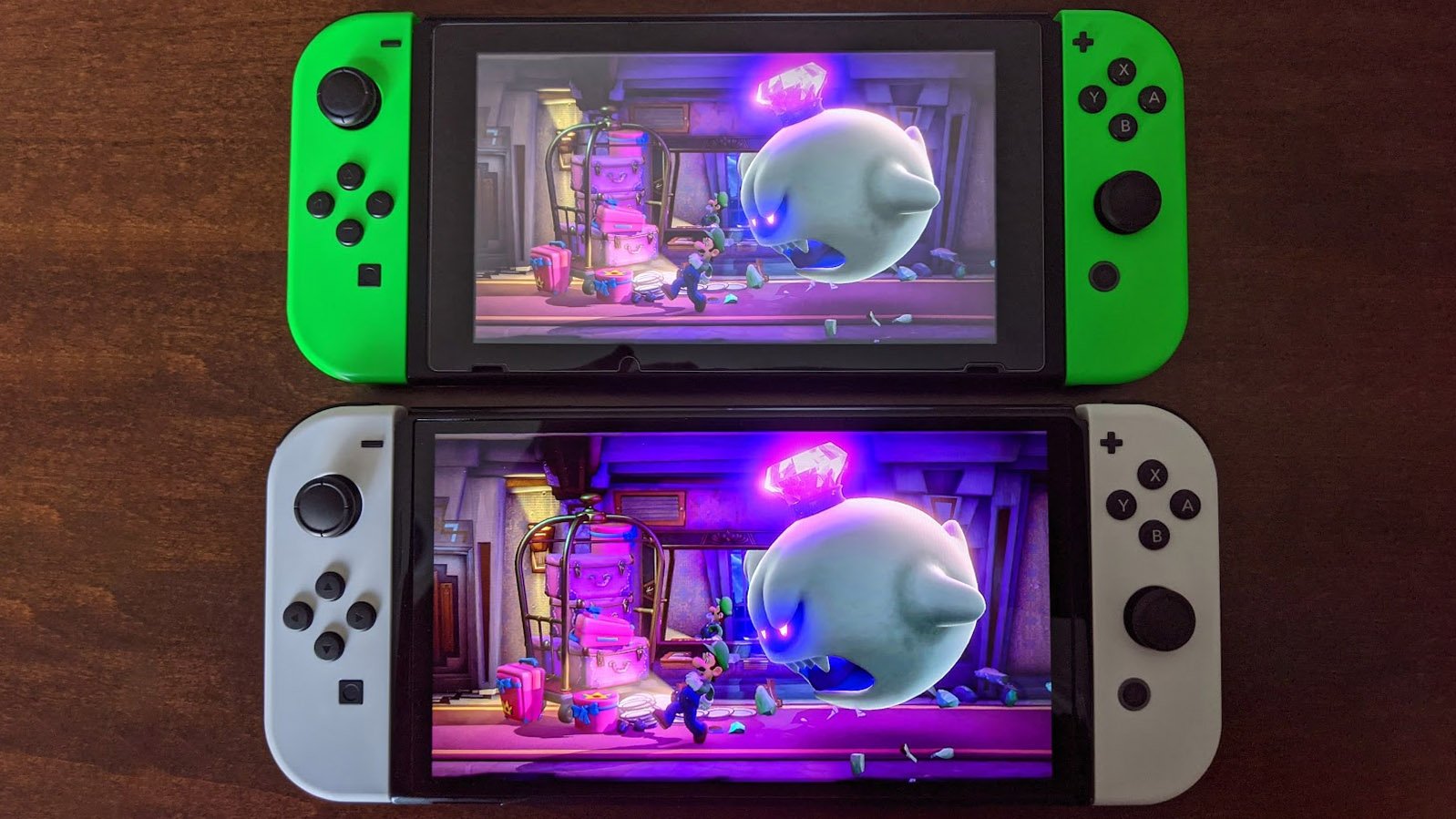
As with previous Nintendo Switch iterations, the OLED model is designed for both on-the-go gaming as well as on the TV. This makes it perfect for plopping down on the couch to play after I've had a long day or bringing it along with me during road trips to entertain everyone. The Joy-Con controllers on either side of the device slide off and can be used either together as one controller or turned sideways to be used as individual controllers for two players. This makes it one of the best gaming systems out there for families or friends since it's easy to share and bring everywhere. This console is slightly wider than previous Switch versions, so make sure you buy a specific Switch OLED case to make sure it fits properly.
However, while I haven't had any problems with my Switch OLED Joy-Cons, it is worth noting that many players, including myself, have experienced a problem with previous Switch iterations where the controllers can send signals to the Switch without anyone touching them. This is usually caused over time as use wears down the controller's contact points within the casing. Thankfully, there are some Joy-Con drift fixes that can help if you have this problem. The OLED model Joy-Cons are the same as the Switch V2's, so these issues might crop up over time.
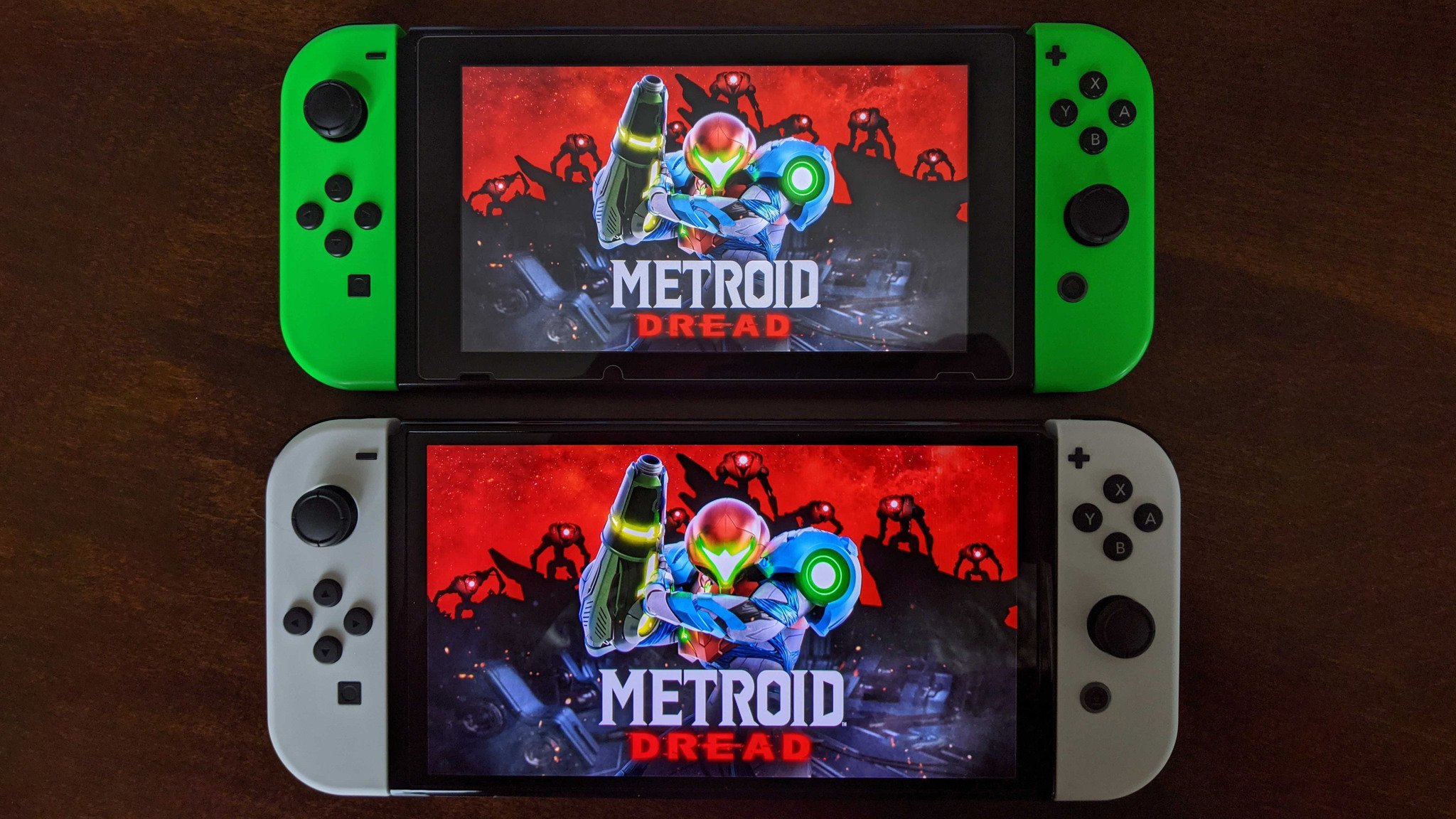
There are several design differences from previous Switch versions, the biggest being the much larger and far improved OLED display, which shows off colors more vibrantly than any previous Switch screen. I've been impressed by how it pulls out colors in darker scenes while also making black colors look truly black. The larger size also makes the earlier Switch versions look old since they have that thick bezel around the screen. The biggest thing to be concerned about is the possibility of OLED screen burn-in, where a ghostly residual of a past screen might display over what you're currently seeing. Fortunately, Nintendo has specifically added a Screen Burn-in Reduction mode within the Switch OLED's settings that is on by default, which should help with this potential problem.
Interestingly enough, I noticed that the OLED model comes with a thin film screen protector already installed on the display. You should leave this alone as peeling it off might cause permanent visual changes to your system. What's more, you should definitely install a more reliable Switch OLED screen protector over it to keep that fancy display safe from scratches.
The OLED screen makes games look better than ever before in handheld mode.
Another design difference centers around the kickstand. Instead of being a flimsy little stick on one side of the back casing, the Switch OLED's kickstand goes along the entire back of the console. The original Switch could only hold itself up at one angle, and if you were on an uneven surface or traveling, it would easily fall over. In comparison, I found that I can press the OLED model's kickstand back to just about any angle within its range and it will hold the Switch still without sliding or tipping. This makes playing in tabletop mode a whole lot more feasible.
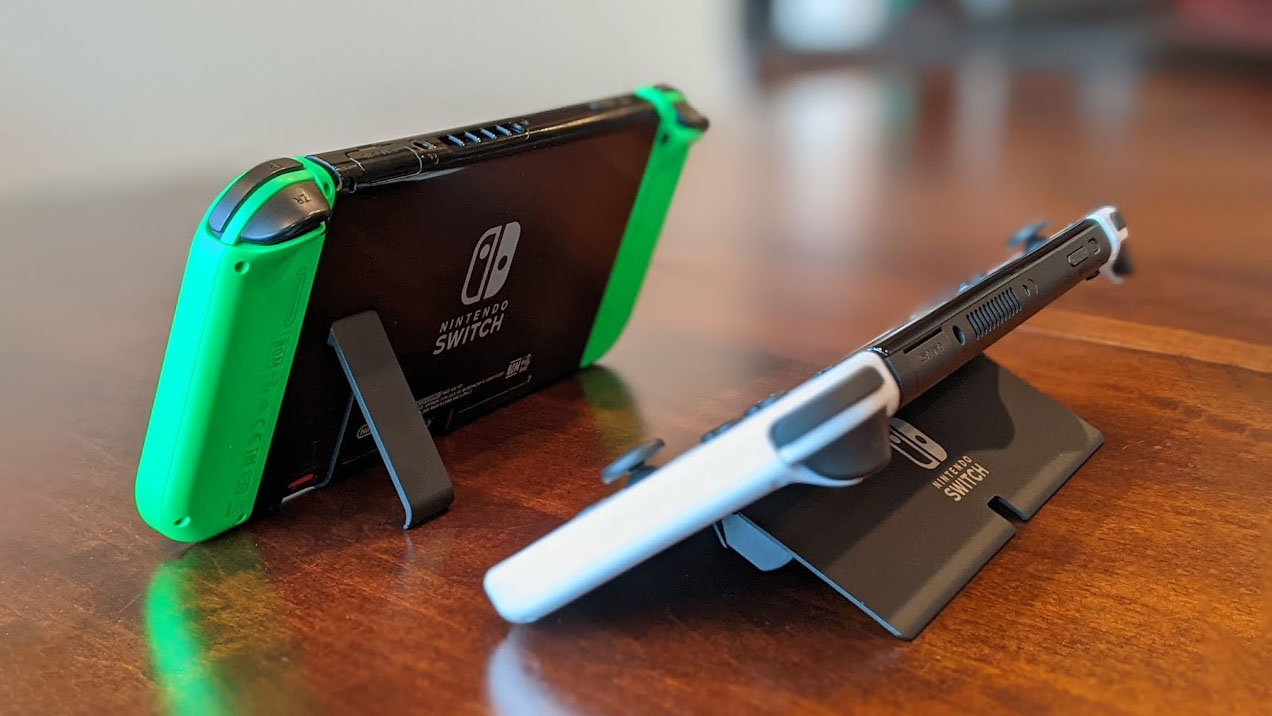
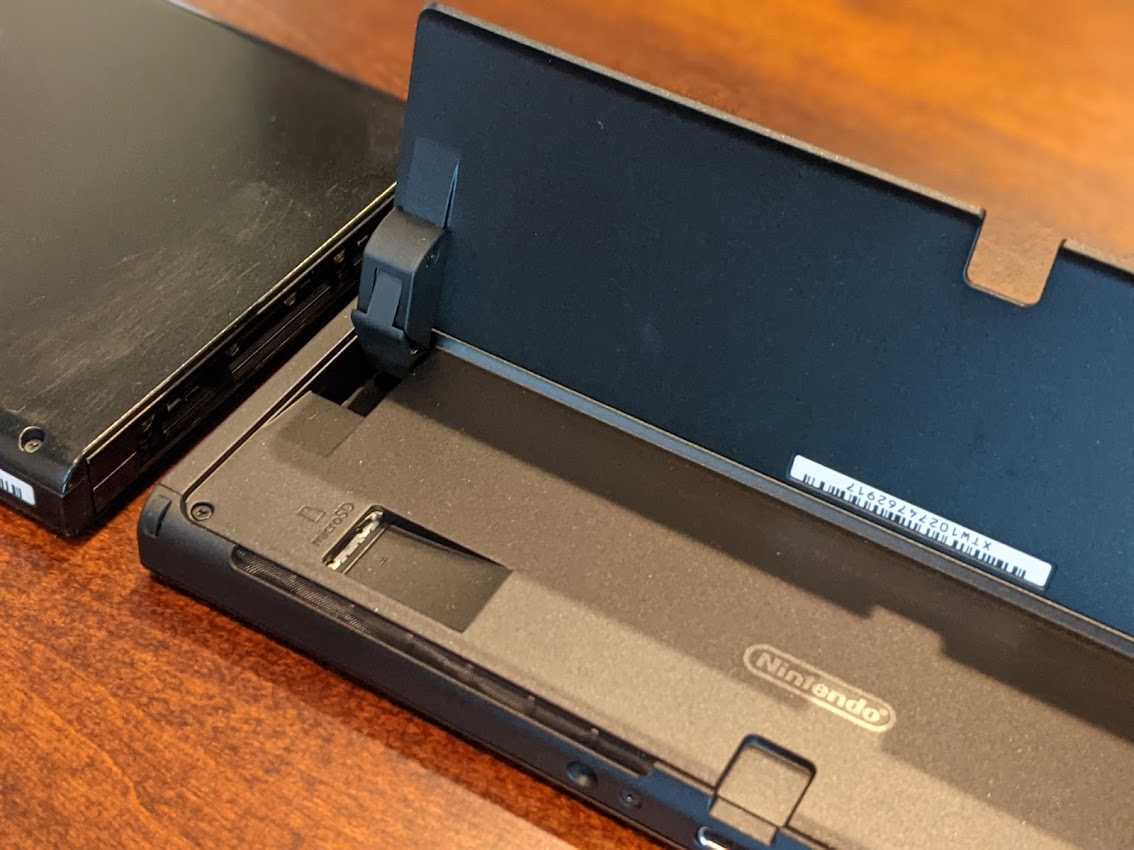
A microSD card slot is protected just beneath the kickstand and can hold up to 2TB microSD cards. However, somewhere between 128GB and 256GB is sufficient for the average player. The Switch OLED does have twice the internal storage of any previous Switch with 64GB, but this is only enough space to hold about five to six large games before getting full, so you really should purchase a memory card with your console.
Lastly, the Switch OLED dock is the key to making TV play possible. You simply place the Switch inside the cradle while the dock is connected to your TV's HDMI cables and you'll be good to go. The OLED model dock is slightly improved from the original dock and is the first Nintendo console ever to feature a LAN port. This will help give online multiplayer games a stronger internet connection instead of simply needing to rely on Wi-Fi.
One weird thing to note is that the flap on the backside of the dock that you can open to insert Ethernet, HDMI, and charging cables is a separate piece that pops off instead of being a hinged door like it is in the previous Switch dock. This makes it easier to lose, but if you don't really move it much this shouldn't be a problem.
Nintendo Switch OLED: Software and performance
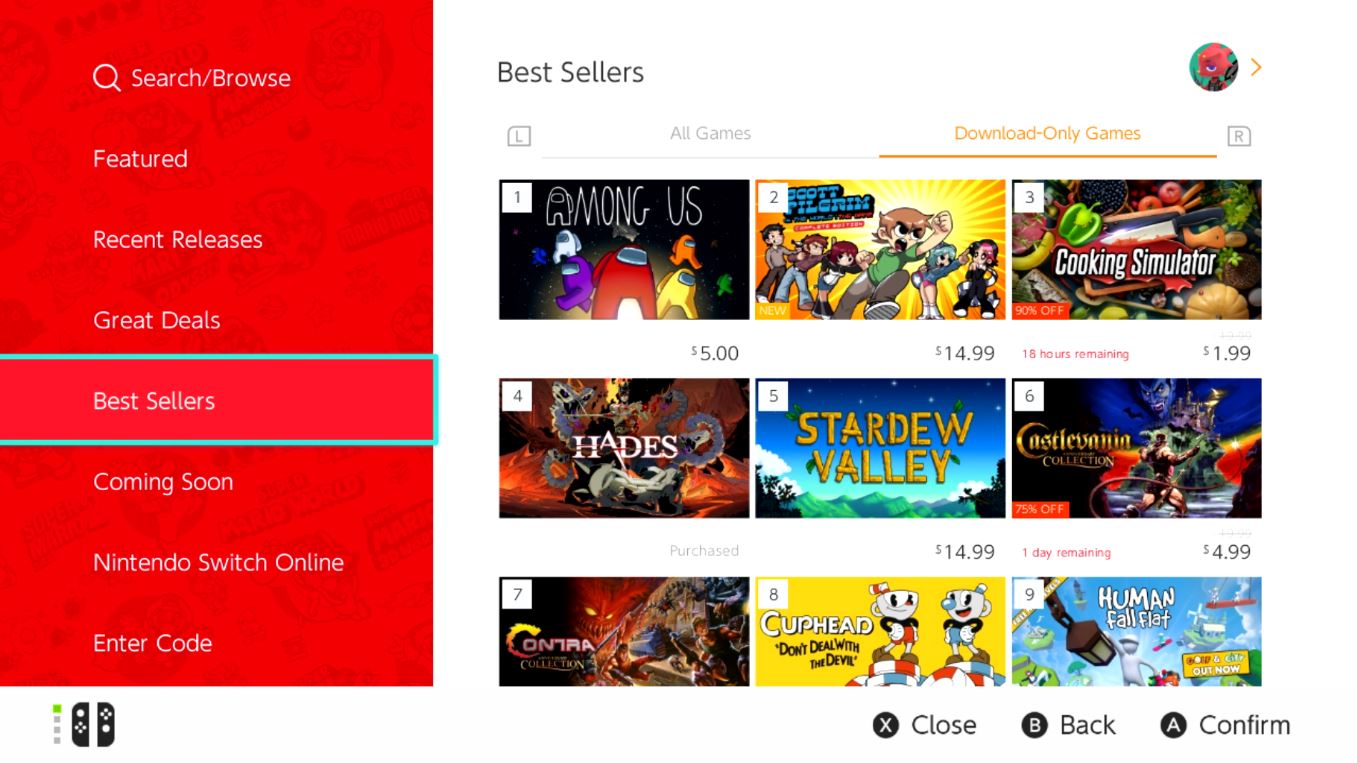
The OLED model has the same processing power, frame rates, and available games as the original Switch. Even the resolution is the same, with up to 1080p in docked mode and up to 720p in handheld mode. Despite offering the same resolution, that OLED screen really makes the game visuals come through better than ever before, as mentioned previously. The average game plays at 60 frames per second (FPS), but that can change depending on the specific title and settings.
There are thousands of games available for the system, including single-player adventures like Metroid Dread as well as multiplayer games for everyone to enjoy together like Mario Kart 8 Deluxe. There are also several highly-anticipated games on the horizon to keep playing on the Nintendo Switch OLED an exciting prospect for the next few years.
Nintendo Switch Online and N64 games
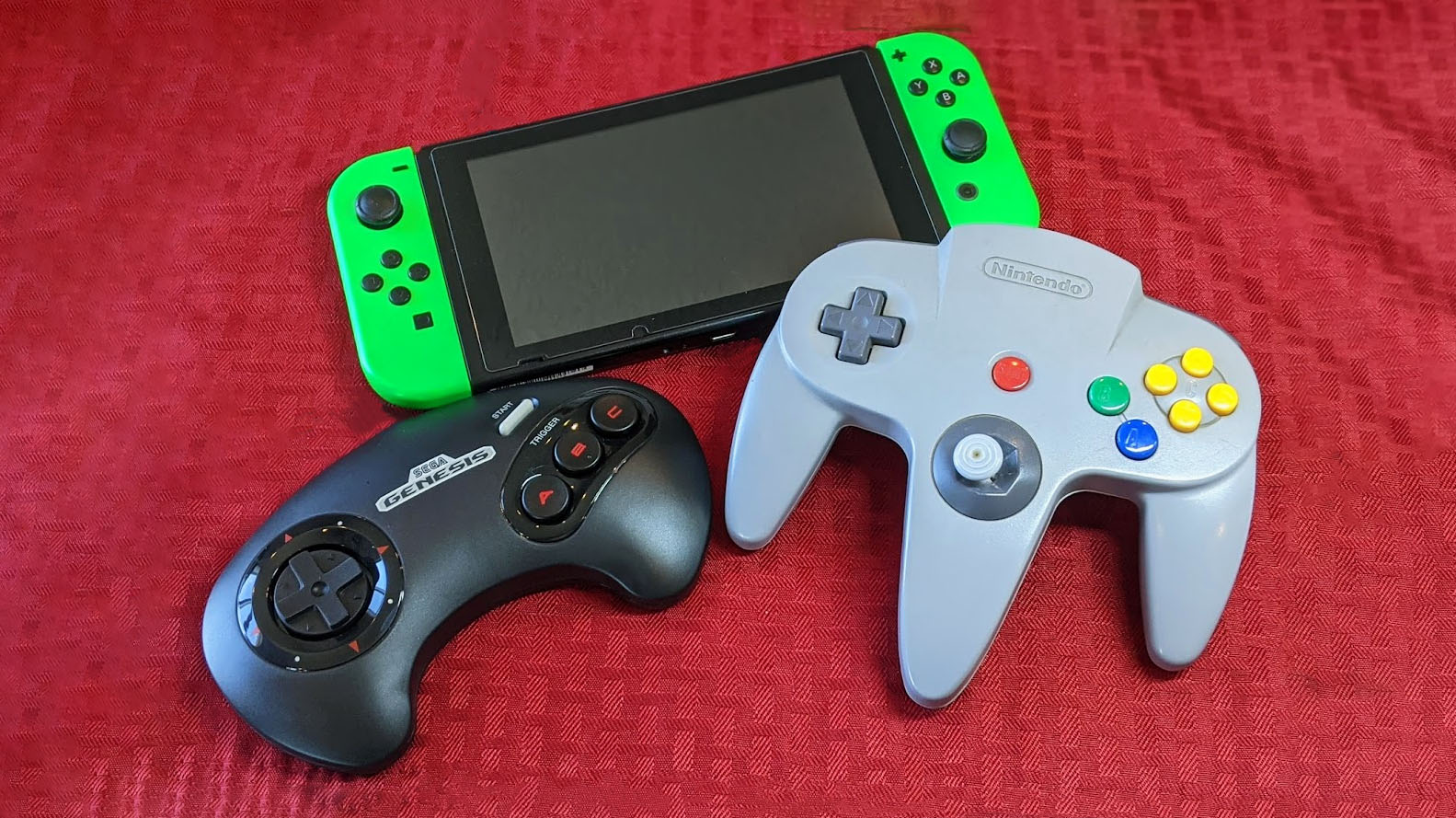
In order to play most online components of any Switch game, like being able to fight others from around the world in Super Smash Bros. Ultimate, players must have a Nintendo Switch Online (NSO) membership. In addition to online functions, NSO also grants access to a list of select NES and SNES games, including classics like The Legend of Zelda: A Link to the Past, Donkey Kong Country, and more. These subscriptions are offered in individual plans or family plans for up to eight people.
Sometime this month, an additional subscription known as Nintendo Switch Online + Expansion Pack will release, bringing N64 games and Sega Genesis games to all Switches, including the Switch OLED. This list includes favorites like The Legend of Zelda: Ocarina of Time and Star Fox 64 for N64 and Genesis classics like Sonic the Hedgehog 2, and Streets of Rage 2. Pricing for this subscription has not been revealed yet, nor has an exact release date, but it'll add a great deal of value to the Switch family.
Nintendo Switch OLED: Battery
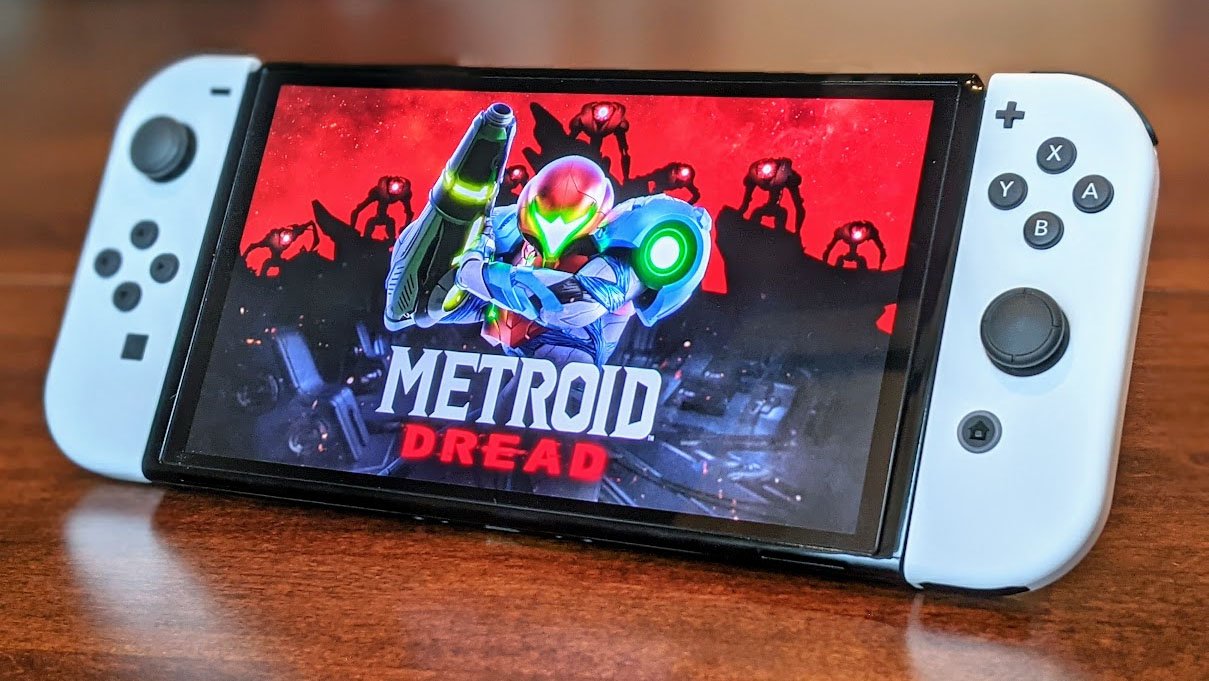
Being a handheld-capable console, the battery life of the Switch OLED is an important factor. The system typically can run between 4.5-9 hours, but this depends on the game you're playing and your brightness settings. For instance, The Legend of Zelda: Breath of the Wild is a more battery-draining game, and so the OLED model only lasts about 5.5 hours when I play that game non-stop. If you want the battery to last longer, turn down the brightness and turn on airplane mode.
For anyone who's curious, this battery life on the Switch OLED model is better than the Switch Lite's, which only lasts between 3-7 hours, as well as the original Switch which only goes runs up to 6.5 hours. However, it's the same as the Switch V2, which released in 2019.
Nintendo Switch OLED: Parental Controls
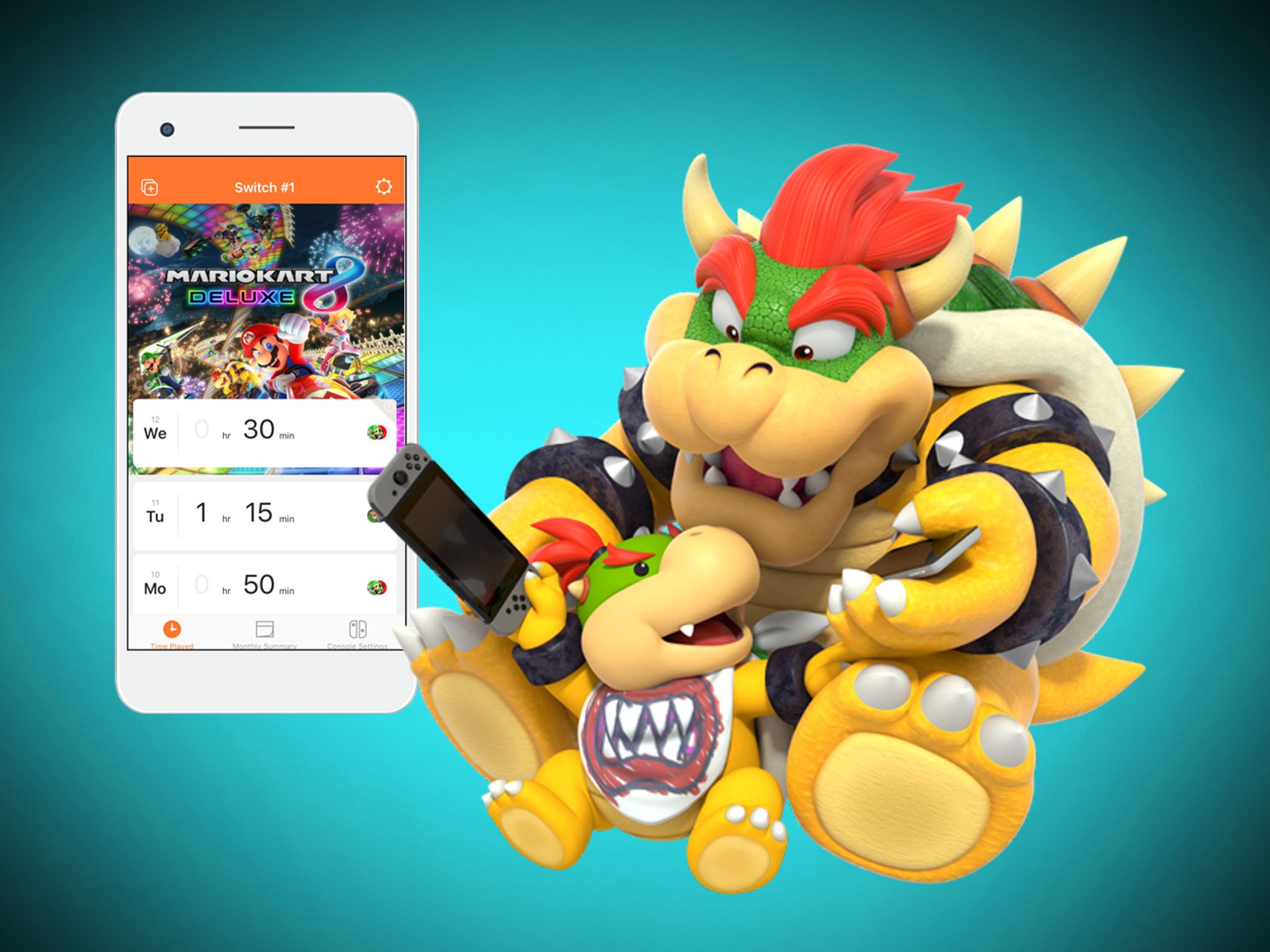
Compared to the Xbox Series X and PS5, the Nintendo Switch has far more couch co-op games for people of all ages to play. However, there are also a number of mature games for adults, so you'll have plenty of variety.
You can keep your kids safe using parental controls via an app, downloadable on the App Store or the Google Play Store. This will allow you to determine what kind of games your child can access, lets you choose whether or not voice chat is allowed, and can even let you set daily playtime limits. It can also help you set up passwords for purchasing anything on the Nintendo eShop and let you know what games your child has been playing.
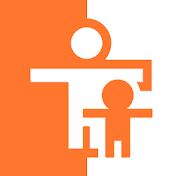
Control playtime and accessible games
Using this app, you'll be able to set limitations on playtime, prevent kids from being able to access certain games, turn off voice chat abilities, and more.
Nintendo Switch OLED: Competition
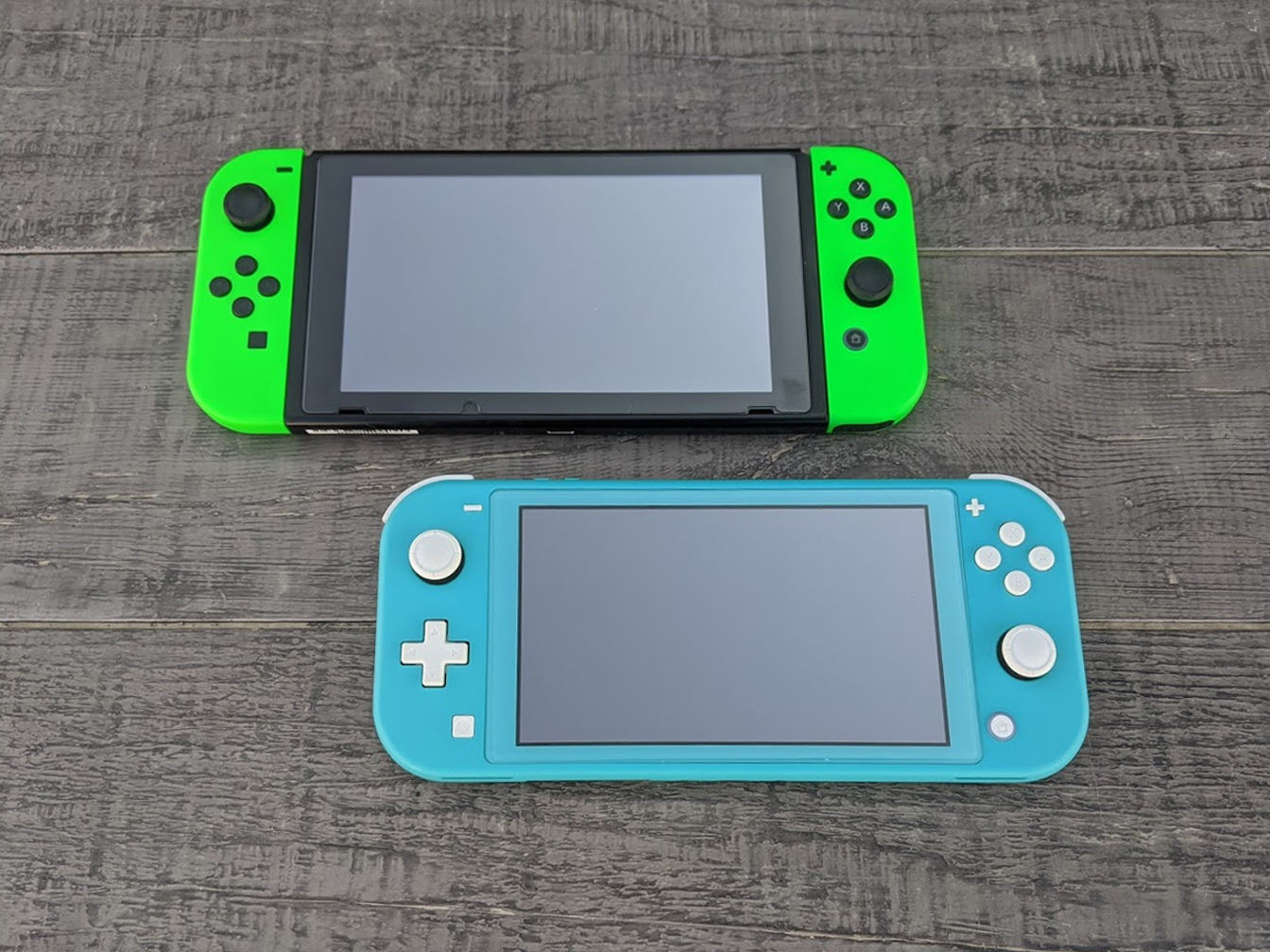
Honestly, one of the biggest competitors to the Switch OLED model is Nintendo itself. There's the smaller Switch Lite, which only sells for $200, but only offers handheld mode. Then, there's the Switch V2, which is pretty similar to the OLED model but with an LCD screen and a few other changes, which only sells for $300. It's worth noting that while the Switch V2 and the OLED model can play the same games, the Switch Lite doesn't work as well with some Switch games.
There's also the Steam Deck, Valve's handheld system that should be releasing this December. It will be capable of playing any Steam games in your library and has a much more impressive GPU/CPU than any Nintendo Switch offers. However, the battery life isn't quite as good as the Switch OLED's and obviously the library of games are vastly different.
Nintendo Switch OLED model: Should you buy it?
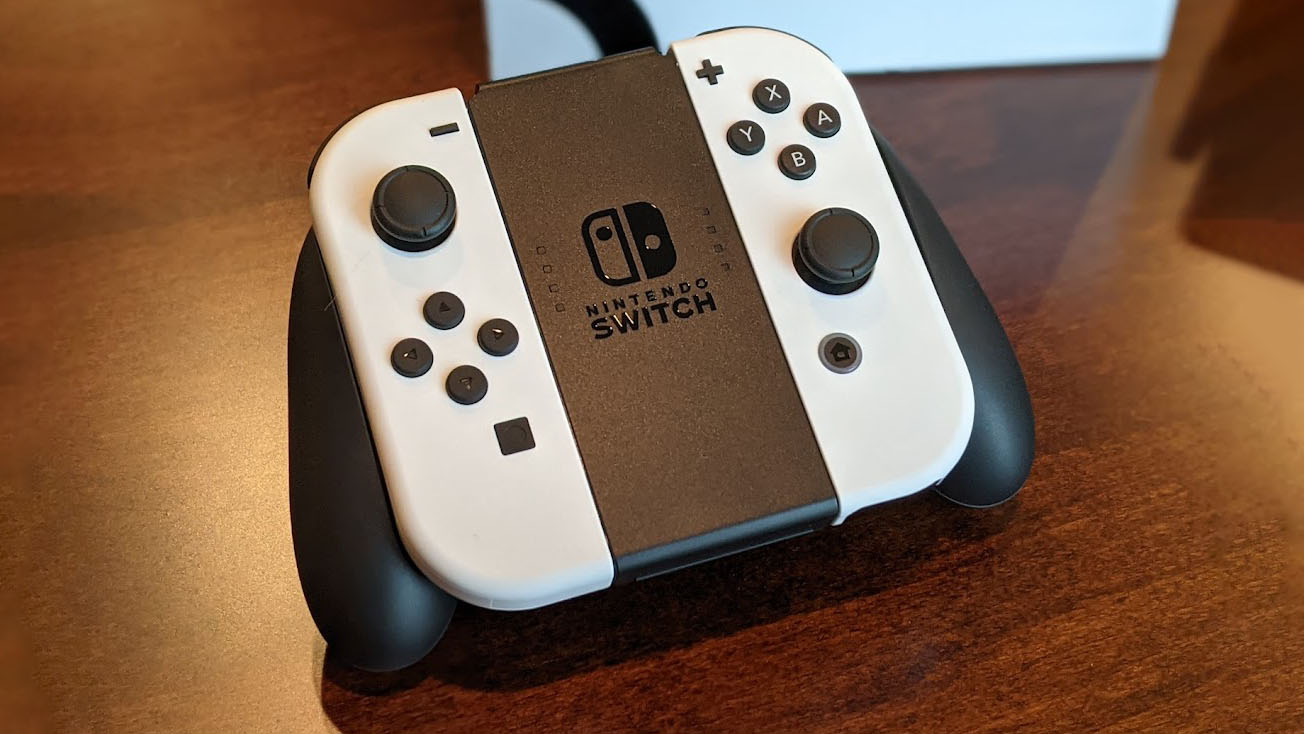
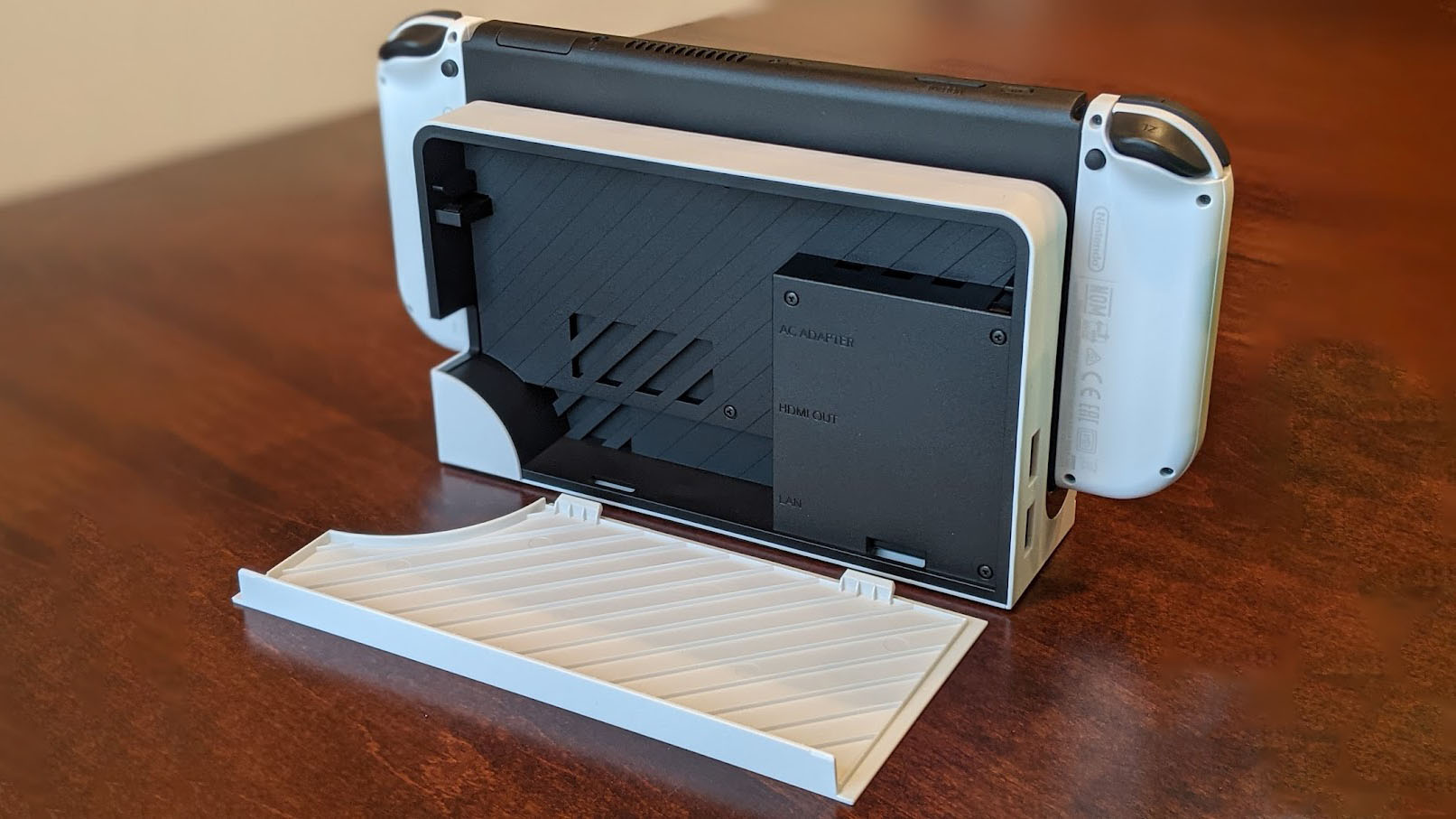
You should buy this if ...
You want to play on the go
The fancy new OLED display only makes the game's visuals look better in handheld mode. The look of your games when docked will depend on your TV, but those crisp outlines and vibrant colors are better enjoyed when on the go.
You want to share the Switch
More than any other gaming company, Nintendo has worked to make its Switch consoles multiplayer-focused. This means that many of the games offer local split-screen co-op, so you and your family or friends can play together while sitting on the same couch. Some games, like Super Smash Bros. Ultimate and Luigi's Mansion 3, even offer multiplayer games for up to eight players, you just need to have enough controllers to go around. The hybrid nature of the removable Joy-Cons also helps them easily turn into multiple controls for impromptu two-player wherever you are.
You want to upgrade from Switch Lite or OG Switch
The battery life in the OLED model is much better than what we got in the original Switch or the Switch Lite by a few hours. If you're looking to upgrade, then the OLED model will have that impressive new screen, better battery life, and a host of other smallish updates to make gaming a little more convenient.
You should not buy this if ...
You want the cheapest Switch
You can easily save $50 and have almost all of the functions of the Switch OLED by purchasing the Switch V2. There will be a few noticeable differences like only having an LCD screen and a less helpful kickstand. But any games will play the same.
You want graphically intensive games
The Nintendo Switch is really behind the curve when it comes to current-gen consoles. The Xbox Series X and PS5 are pushing the boundaries into 8K, have much more powerful CPUs/GPUs, and have far more realistic-looking titles to offer. This doesn't mean that the Switch isn't good; it's just that Nintendo's focus is more on the player experience rather than the visual look of its games.
Your favorite game franchises aren't on Switch
Due to exclusivity deals, some games are only available on specific consoles. For instance, Halo is an Xbox-only console series, Uncharted is a PlayStation-only console series, and Mario is a Nintendo-only console series. If you're looking to buy a system for yourself or someone else, make sure the games on your list are on that system.
The Nintendo Switch OLED isn't quite as big a step forward as many people would have hoped for the next Switch system. However, it is impressive to behold. That OLED display makes game visuals pop like never before in handheld mode. Plus, the larger screen looks great, and really makes the original Switch look retro. It's a great console whether you're looking for single-player adventures or games to share with your loved ones.
It is a bit more expensive than previous Switch versions and since the Switch V2 is still on store shelves selling for $50 cheaper, the previous Switch iteration might be more appealing for budget-conscious folks. The internal storage isn't the best, so you really will need to purchase a microSD card if you get this system. Additionally, the battery life, while better than some other Switch versions, still isn't that great. But overall, the Switch OLED is a fun system that people of any age will enjoy, and it's a great upgrade for those who already chose Nintendo.

Gaming aficionado Rebecca Spear is iMore's dedicated gaming editor with a focus on Nintendo Switch and iOS gaming. You’ll never catch her without her Switch or her iPad Air handy. If you’ve got a question about Pokémon, The Legend of Zelda, or just about any other Nintendo series check out her guides to help you out. Rebecca has written thousands of articles in the last six years including hundreds of extensive gaming guides, previews, and reviews for both Switch and Apple Arcade. She also loves checking out new gaming accessories like iPhone controllers and has her ear to the ground when it comes to covering the next big trend.
